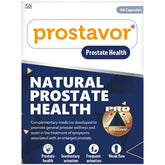Hysteroscopy
Hysteroscopy is a minimally invasive surgical procedure used to diagnose and treat various conditions affecting the uterus (womb) and cervix. It involves the insertion of a thin, lighted instrument called a hysteroscope through the vagina and cervix into the uterus, allowing visualization of the uterine cavity and surrounding structures.
Types of Hysteroscopy
-
Diagnostic Hysteroscopy:
- Used primarily for diagnostic purposes to evaluate the uterine cavity for abnormalities such as polyps, fibroids, adhesions (scar tissue), or abnormal bleeding.
-
Operative Hysteroscopy:
- Involves the use of specialized instruments inserted through the hysteroscope to perform surgical procedures, such as removing polyps, fibroids, or adhesions, and treating abnormal uterine bleeding.
Procedure
A hysteroscopy procedure typically involves the following steps:
-
Preparation:
- The patient may receive sedation or anesthesia, depending on the type of hysteroscopy and individual preferences.
- The cervix may be dilated (opened) slightly to allow passage of the hysteroscope.
-
Insertion of Hysteroscope:
- The hysteroscope is inserted through the vagina and cervix into the uterus.
- Carbon dioxide gas or a sterile liquid solution may be used to expand the uterine cavity, providing better visualization.
-
Visualization and Examination:
- The surgeon or gynecologist examines the uterine cavity and identifies any abnormalities using the hysteroscope's camera and light source.
- Images may be displayed on a monitor for real-time viewing.
-
Treatment (if necessary):
- If abnormalities are detected, the surgeon may perform therapeutic interventions during the same procedure.
- This may include removing polyps, fibroids, or adhesions, or performing endometrial ablation to treat abnormal uterine bleeding.
-
Removal of Instruments and Recovery:
- Once the procedure is complete, the hysteroscope and any instruments are removed.
- Recovery time is typically minimal, and patients can usually return home the same day.
Indications for Hysteroscopy
Hysteroscopy may be recommended for various gynecological indications, including:
- Abnormal uterine bleeding, such as heavy or irregular menstrual periods.
- Evaluation of infertility or recurrent miscarriages.
- Diagnosis and removal of uterine polyps or fibroids.
- Assessment of abnormal findings on imaging studies (e.g., ultrasound).
- Investigation of pelvic pain or abnormal discharge.
Advantages of Hysteroscopy
Hysteroscopy offers several advantages over traditional open surgery:
-
Minimally Invasive: Hysteroscopy is less invasive than traditional surgery, resulting in smaller incisions, less pain, and faster recovery.
-
Accurate Diagnosis: Provides direct visualization of the uterine cavity, allowing for accurate diagnosis of uterine abnormalities.
-
Therapeutic Benefits: In addition to diagnosis, hysteroscopy allows for simultaneous treatment of many uterine conditions, reducing the need for separate procedures.
-
Outpatient Procedure: In most cases, hysteroscopy can be performed on an outpatient basis, avoiding the need for hospitalization.
Risks and Complications
While hysteroscopy is considered safe, it carries some risks and potential complications, including:
- Infection: Risk of infection, although rare, particularly if the procedure involves surgical interventions.
- Bleeding: Minimal bleeding during or after the procedure, especially if surgical interventions are performed.
- Uterine Perforation: Rare risk of perforation (puncture) of the uterus, particularly if the uterus is scarred or distorted.
- Fluid Overload: Rare risk of fluid overload, particularly if large volumes of fluid are used during the procedure.
Conclusion
Hysteroscopy is a valuable diagnostic and therapeutic tool used to evaluate and treat various gynecological conditions affecting the uterus and cervix. With its minimally invasive nature, high accuracy, and therapeutic benefits, hysteroscopy has become an essential procedure in modern gynecological practice. It offers patients a safe and effective means of diagnosing and managing uterine abnormalities while minimizing discomfort and facilitating faster recovery. If you have concerns about your gynecological health or are experiencing symptoms, consult with your healthcare provider to determine if hysteroscopy is an appropriate option for you
- Complication of Hysteroscopy
- Diagnosis of Hysteroscopy
- How is Hysteroscopy treated?
- Hysteroscopy
- Hysteroscopy myths
- Medicine for Hysteroscopy
- Remedies for Hysteroscopy
- Support for Hysteroscopy
- Symptoms associated with Hysteroscopy
- The best British Online Pharmacy
- Top 10 UK Pharmacies
- Treatment for Hysteroscopy
- What causes Hysteroscopy
- What is Hysteroscopy
- Where can I buy medicine for Hysteroscopy in the UK
- ZimSeller Pharmacy



















